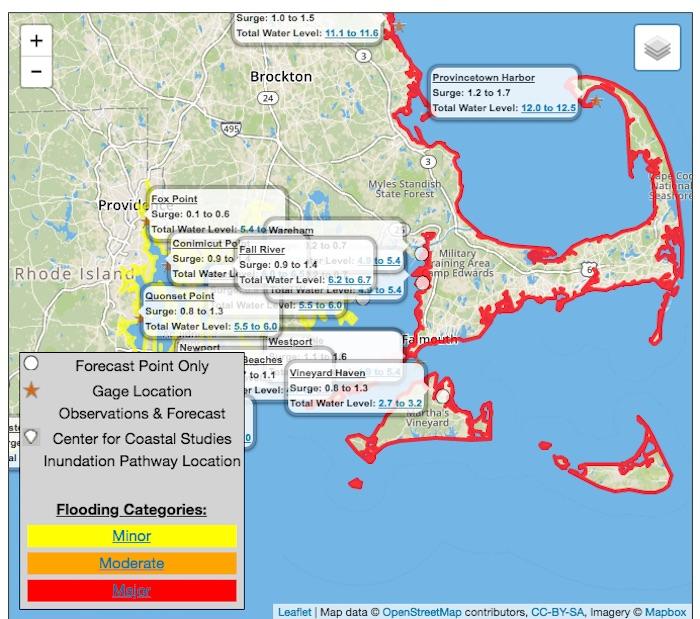
A potent winter storm is expected to bring flooding to most areas of Cape Cod this weekend/National Weather Service
"Astronomically" high tides, waves possibly three stories tall crashing ashore, and heavy rains are descending on Cape Cod National Seashore on the Massachusetts coast as a potent storm that could dwarf January's "bomb cyclone" arrives this weekend.
"We won't be getting snow. We do expect from what everybody is saying are some pretty heavy rains," Karst Hoogeboom, the seashore's chief of facilities and maintenance said Thursday afternoon. "Provincetown is sandbagging right now."
While the sandbagging was being done under mostly sunny skies and temperatures in the mid-40s, that all was going to change very drastically overnight, the National Weather Service said. Friday would arrive with 1-2 inches of rain, possibly heavy at times, and winds that could gust to 70 mph, the agency said. Flooding and beach erosion was expected throughout the cape.
Friday night the Weather Service predicted strong winds with gusts perhaps to 75 mph, and possibly another inch of rain. Both rainfall and winds were expected to slacken Saturday.
While the weather forecast was bad enough, its impact on the seashore was expected to be amplified by the full moon Thursday into Friday and high tides.
"We’re in a period right now of astronomically high tides," Chief Hoogeboom said, referring to the moon's effect. "We are aware that’s going to be a problem.”
Chief Hoogeboom, while taken back by the forecast of "30-foot rollers" crashing to shore, waves the size of which he hasn't seen since the 1960s, said the national seashore was pretty much battened down.
"We’re a little bit concerned, but since it’s the wintertime we don’t have much out," he said. "We are a little bit concerned about washovers and break-thrus at various locations on the cape.”

A footpath more than 600 feet in length has replaced stairs needed to reach Nauset Light Beach at Cape Cod National Seashore/NPS
And while past winter storms have taken out, time and again, the wooden staircase beachgoers used to access Nauset Light Beach on the seashore, that structure finally was demolished by the Park Service and replaced with a winding path that leads to the beach.
The 635-foot path follows a natural contour south of the parking lot. An engineering study and evaluation process two years ago determined that among various options, the footpath was the most sustainable, economically feasible, and safe access solution.
"Our thought is that year-round we’ll be able to get people to the beach and not have to pay $150,000 a year to replace (the stairs)," Chief Hoogeboom said. The path was designed in such a way that crews really don't expect storms to inflict any more damage than that which can be raked out, he said.

The footpath was constructed in such a way that it shouldn't be greatly impacted by storms/NPS





